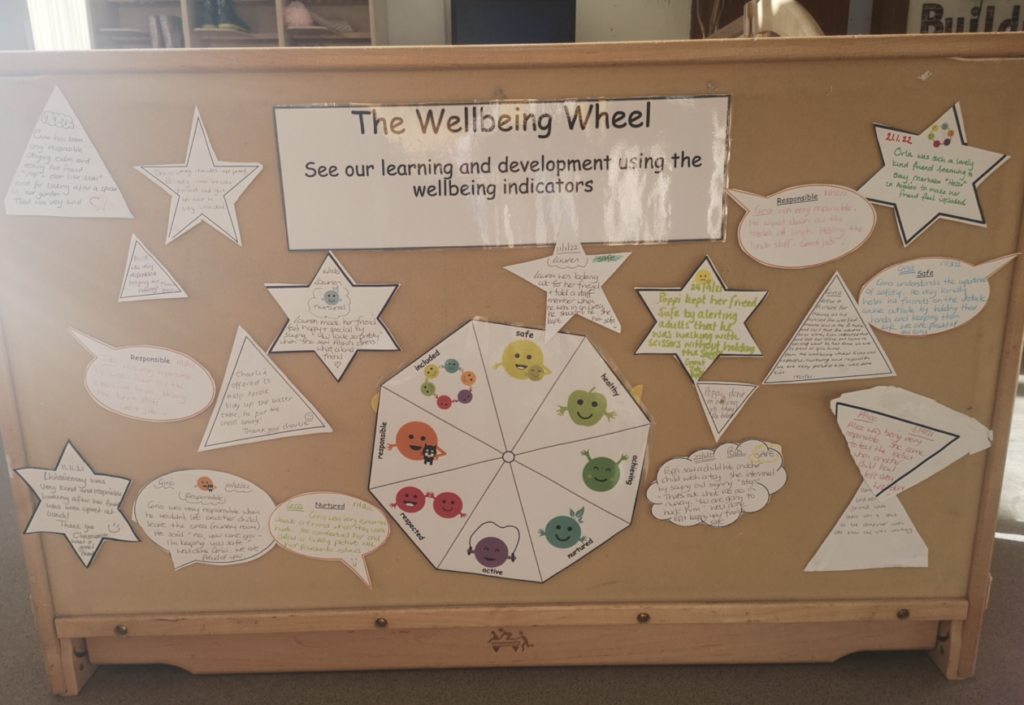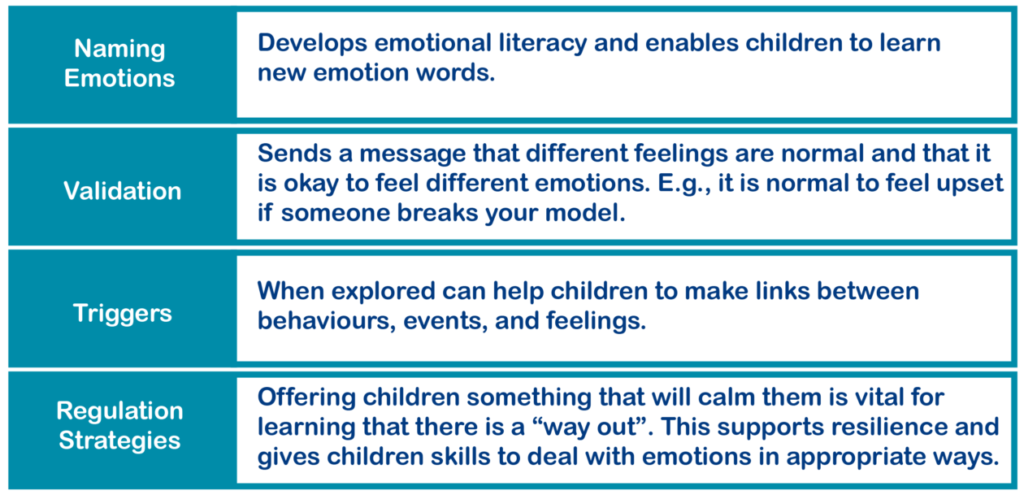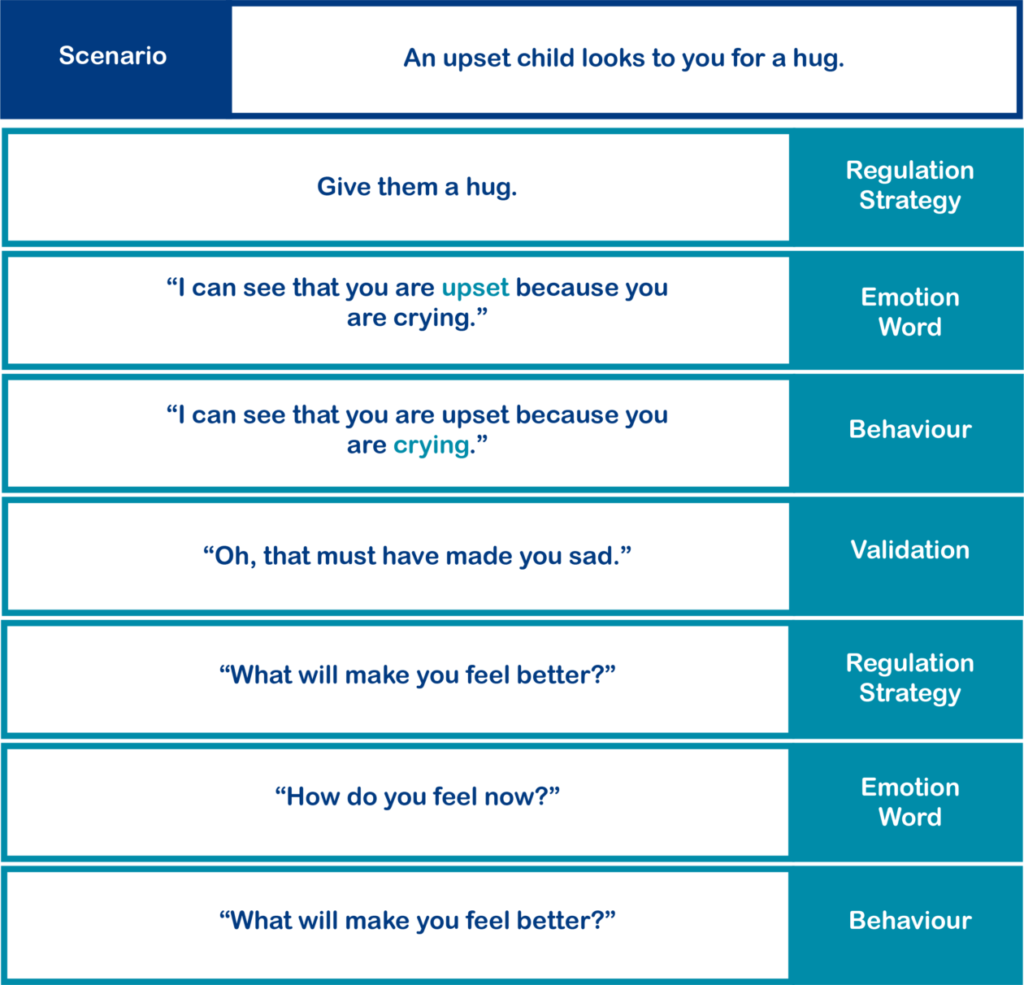Health & Wellbeing Practice Inspiration
In order to provide ‘practice inspiration’ surrounding Health & Wellbeing, this section will offer insights into the excellent and innovative practice at Beanstalk Family Nurture Centre.
This short article contains some useful information and examples about the ethos, strategies, activities and resources that Beanstalk’s staff draw upon to support children’s Health & Wellbeing.
Beanstalk Family Nurture Centre
“It’s all in the ethos!”
For the staff at Beanstalk, being a Family Nurture Centre means more than just a name above the door. ‘Nurture’ underpins our vision, aims, and values and can be felt upon entering the building. It is embedded in our ethos and is key to our interactions, staff practice, and relationships with families and children.
This ethos is built and maintained by our passionate and skilled staff team who are supported and empowered by the senior leadership team to follow their interests, tune into their skills, and lead.
We have a strong understanding of the community that we serve and give full consideration to the socio-demographic of our families. This is reflected in the intensive work towards staff development in areas that support wellbeing. It is the absolute belief within our centre that children will learn and achieve when they are regulated, relaxed, and benefitting from good health and wellbeing.
Relationships are Key
Staff work hard to build strong relationships with children and families based upon effective communication, non-judgement, respect, and trust.
A nurturing approach is embedded throughout the centre that staff understand the importance of.
Sometimes the simplest things can be the most effective, such as staff using their first names with families. We find that this lends itself to relationship building by lessening the ‘authoritative’ perception.
Another simple approach may be noticing parents that are stressed, anxious, or ‘not themselves’ at drop-off or pick-up times and checking in with them. This helps staff to understand their key children and families very well, enabling them to be more intuitive to their needs. Learners and families with specific wellbeing needs receive a bespoke, tailored approach to ensure effectiveness.
The Holistic Child
Our practitioners know their children very well and value them as individuals with their own strengths and identified needs.
Staff observe their key children, assessing their wellbeing and engagement throughout their sessions, and are responsive to their needs.
Through the positive relationships built with families, staff can take a holistic view of each child and begin to understand the challenges that they face which are often displayed through behaviour. These are attended to in a nurturing manner.
Wellbeing Indicators
Staff have a shared understanding of the Wellbeing Indicators and regularly use these to support learners across the setting in both a universal and targeted way depending on their needs.
For example, the Wellbeing Indicators are used to prepare detailed reports prior to individual children’s review meetings, during which they are shared with parents and other professionals.
The indicators are also used in everyday language to celebrate the successes of children with the children. For example, if a child helps their friend to put on their coat, we tell them that they are “very kind” and “nurturing”. This will be recorded and displayed on our ‘wellbeing wall’.
Wellbeing Activities
All of our staff have been trained in using mindfulness techniques with children to provide strategies that help with self-regulation and to support positive mental health.
These exercises can be supported by basic resources such as an ‘extendaball’, or a teddy lying on a child’s chest that children can see moving up and down as they breathe. Both resources offer a visual element to breathing exercises.
Children are also offered the opportunity to participate in short yoga sessions that take place throughout the week. These sessions also provide opportunities for children to articulate their feelings, offering them supportive strategies to control and regulate their emotions. Having spaces with a mat and simple yoga exercise posters allow children to explore activities themselves.
The image below depcits the aformentioned yoga exercise poster and ‘extendaball’ resource.
Modelling & Narrating Discussions about Emotions
All of our staff model appropriate, calm, positive, and solution focused behaviours that promote and support wellbeing.
During interactions with children, staff incorporate opportunities to reinforce strategies to regulate and cope with emotions.
In order to explore these at an age-appropriate level, we try to name emotions, validate emotions, highlight behaviours, and explore both triggers and regulation strategies. Notably, not all of these points are appropriate or applicable during every interaction.
Below is an example of these strategies being employed during a scenario in which an upset child is looking for a hug.
Safe Spaces
A nursery playroom can be a very challenging place for a child; therefore, consideration has to be given to the environment.
We take into account that children have to call upon a wide-range of often underdeveloped skills just to get through the session.
These include: the ability to cope with busyness and noise, learning to share spaces and resources, handling conflict, engaging in new experiences and relationships, and the ability to persevere and remain patient.
Quite often, children may need to just ‘get away’, and take time to process or regroup.
Additional Examples
Read about how staff at Lundin Mill Nursery are using the Care Inspectorate’s SIMOA (Safety, Inspect, Monitor, Observe, Act) campaign to support children’s understanding of safety. Click here.






